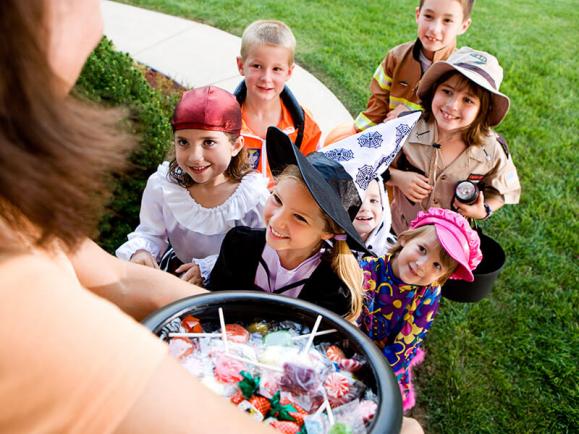
Fox News is warning parents about drugs made to look like candy, especially Halloween candy. Some personalities went as far as saying they wanted to stop old-fashioned Halloween activities.
Drugs have been a frequent topic on Fox News, especially with midterm elections on the horizon. The Washington Post recognized an increase in references to fentanyl on the network in comparison to MSNBC and CNN. The network’s cautions are part of a DEA bulletin issued in September regarding “rainbow fentanyl,” which looks like candy. The agency described the drug as an intentional effort by drug traffickers to increase addiction in young adults and kids.
However, experts are skeptical. Joseph Palamar, an associate professor in the department of population health at NYU Langone Health, told CNN that he doesn’t believe people will give out pills as Halloween candy. Palamar studied trends in illegal fentanyl and believes the colorful drug had been present for years, and Halloween isn’t the real concern.
The issue is people using the drugs in the open at home, where children have access to them and may take them. Rolling Stone released a similar report, stating the colorful drugs weren’t aimed at children or new. Mariah Francis of the National Harm Reduction Coalition told the publication, “The idea that because [the pills] are colorful means that [cartels] must be trying to force fentanyl or ply children or their Halloween candy is markedly ridiculous.”
This new fright meshes with years-old urban legends and unfounded reports about drugs being given away as Halloween candy. Twitter users called out Fox News for their hysterical response and accused the network of bringing cancel culture to the beloved holiday. Another Halloween staple came under fire recently, as one mother accused Disney and “Hocus Pocus 2” of glamorizing the occult and brainwashing children with witchcraft.
Halloween celebrations were limited in colonial New England due to the strict Protestant belief systems. It was more common in the southern colonies. A distinctly American version of Halloween emerged as the beliefs and customs of varying European ethnic groups, and the American Indians meshed. The initial celebrations had “play parties,” which were public events to celebrate the harvest. Neighbors would tell each other’s fortunes, dance and sing, and share stories of the dead.
Copying from European traditions, Americans started dressing up in costumes and going door to door asking for money or food, a practice that became what we know as the “trick or treat” tradition. Young women thought that on Halloween, they could divine the appearance or name of their future husband by doing yarn tricks or apple parings.
Halloween has been a beloved holiday in the United States for years. Many believe that the holiday celebrates the occult, while others see it as a chance to have fun, dress up in costumes, and give candy to the neighborhood kids. Fox News believes drug traffickers are trying to target children by giving away candy disguised as drugs, but other publications believe that’s not the case. This Halloween, watch your children’s candy closely and observe your surroundings.

